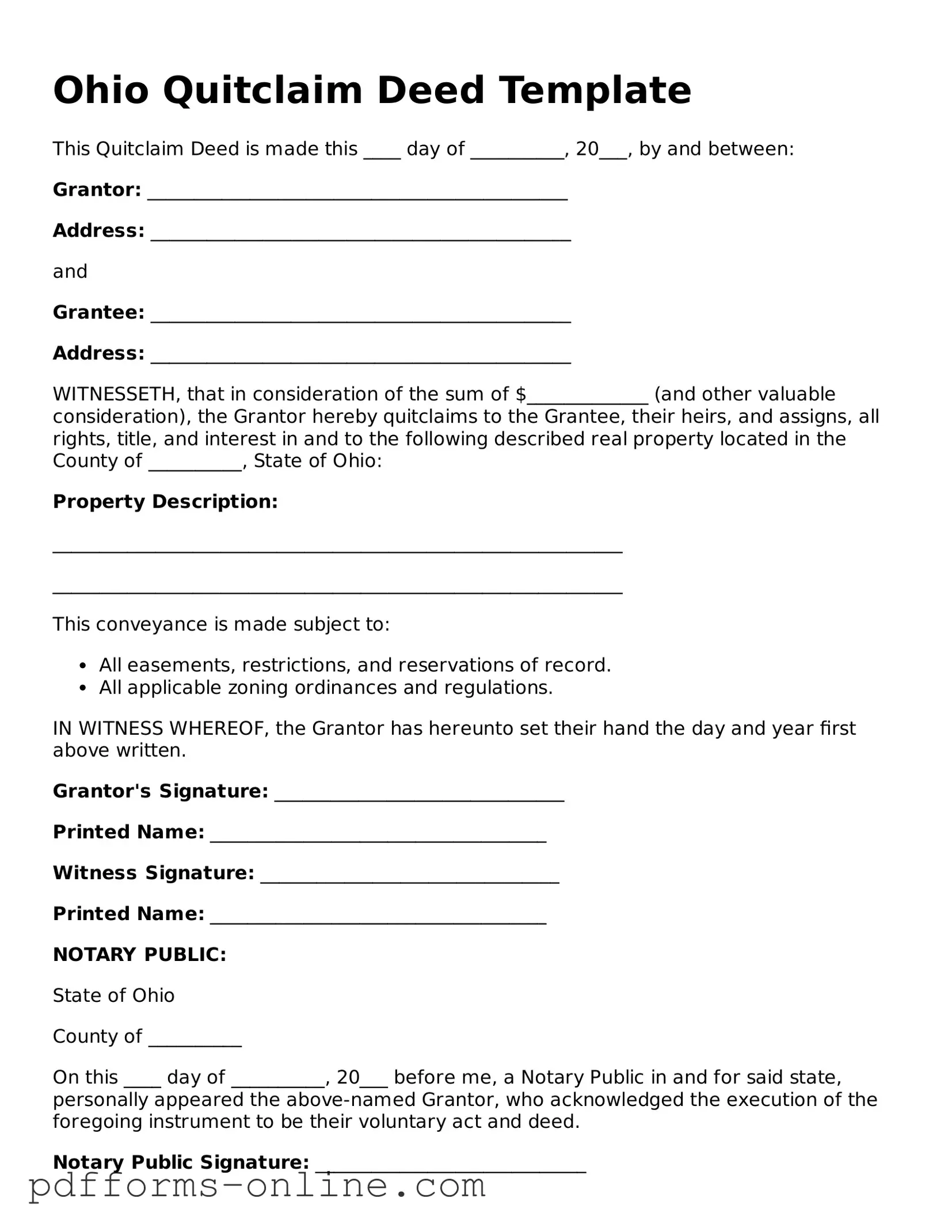Ohio Quitclaim Deed Template
This Quitclaim Deed is made this ____ day of __________, 20___, by and between:
Grantor: _____________________________________________
Address: _____________________________________________
and
Grantee: _____________________________________________
Address: _____________________________________________
WITNESSETH, that in consideration of the sum of $_____________ (and other valuable consideration), the Grantor hereby quitclaims to the Grantee, their heirs, and assigns, all rights, title, and interest in and to the following described real property located in the County of __________, State of Ohio:
Property Description:
_____________________________________________________________
_____________________________________________________________
This conveyance is made subject to:
- All easements, restrictions, and reservations of record.
- All applicable zoning ordinances and regulations.
IN WITNESS WHEREOF, the Grantor has hereunto set their hand the day and year first above written.
Grantor's Signature: _______________________________
Printed Name: ____________________________________
Witness Signature: ________________________________
Printed Name: ____________________________________
NOTARY PUBLIC:
State of Ohio
County of __________
On this ____ day of __________, 20___ before me, a Notary Public in and for said state, personally appeared the above-named Grantor, who acknowledged the execution of the foregoing instrument to be their voluntary act and deed.
Notary Public Signature: _____________________________
My Commission Expires: _____________________________
